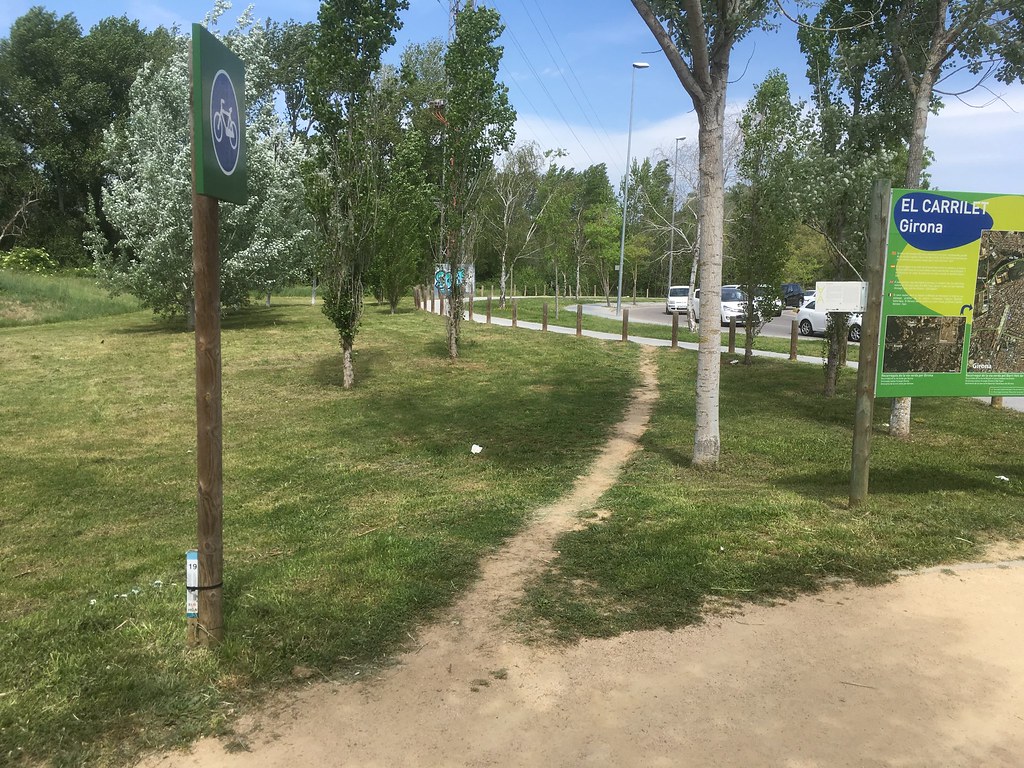By Maureen Glynn
Last fall I participated in the Introduction to Digital Pedagogy with Sean Michael Morris @slamteacher and Jesse Stommel @jessifer, sponsored by @eCampusOntario and @RyersonU – Office of eLearning.
The all-too-brief workshop, along with my review of preparatory materials, represented some of the most impactful hours of professional development that I’ve experienced so far in my career – truly changing the way I think about my work as an Instructional Designer.
Here are some of my initial reflections on how I intend to evolve and hone my practice as a result of the sessions, and to have greater faith in some of my gut instincts –which I have occasionally questioned over the years in the name of “best practices.”
Allowing for “Desire Paths”: I recall once looking at a well beaten stretch of soil between some shrubs in my daughter’s school yard. A friend with a background in landscape and urban planning described it as a “desire line” or “desire path”. It was the trail that the children had instinctively chosen and created over time in spite of the many manicured and carefully placed walkways that had been called for by the yard’s architect.
After #digped, it seems clear to me that, like the young creators of those desire paths, students will always find unanticipated and wonderful ways to enter, exit, and navigate through the learning events and environments that we design, and these alternately carved-out tracks should naturally contribute to our own learning and growth as designers and instructors.
Planning for the actual rather than the imagined: More often than not, I might begin my course development work with an instructor by asking them to tell me about the learners they expect to be in their course.
After #digped I will intentionally, rather than incidentally, encourage instructors to consider their plans to discern and understand the needs of the learners who arrive in their course.
Set the stakes aside (when and as possible): Over the years, it has been common for me to find myself in spirited exchanges regarding the grading of discussions in an online course – frequently wrapping up with the establishment of an assigned participation grade in order to create a sense that something is “at stake”.
After #digped, I will intentionally, rather than incidentally, focus these exchanges on opportunities for and ways of inspiring, rather than requiring dialogue, when planning to foster community in an online course.
(Side note – So many thoughts still simmering in my brain re: the antagonistic relationship between grades and community….)
Span out rather than rein in: Rubrics and exemplars, along with the phrase “let’s show them what ‘good’ looks like,” have long had a place in my conversations with instructors.
After #digped, I look forward to exploring more extensively, alongside the instructors whom I support, ways to inspire students to answer the question “what does ‘good’ look like for me,” or “what can I share as an example for my peers?”
Consider the “being” in the “space”: After years of work in the digital learning space, it is easy to fall into the habit of seeking out digital equivalents to analog/in-person experiences. In other words, if the digital is possible, the digital is necessary.
After #digped, I will intentionally, rather than incidentally, encourage myself and my collaborators to consider the human beings and spaces that encompass the online community of learners.
Why let the fact that a course is online distract us from the fact that we inhabit a world where a physical artifact or tool (a notebook, a canvas, a candle, a bell,) can often be as easily at hand, and better serve a pedagogical purpose, than its digital equivalent (not to mention requiring less data…)?
Tools and transparency: After having designed and launched an online course, many instructors ask me, “How do I know that my students are reading my content/logging into my course shell/using the learning objects I set up?”
My responses to these queries often point them to any/all analytics or reporting features of these tools, with, at best, a note of caution or disclaimer regarding the type of information that might be gleaned.
After #digped (and also following up on themes of #OpenEd18), I will promote among my faculty collaborators a deeper reflection on what they will do with this information, and how they will communicate with their students about the availability of this data and their intentions regarding its use.
Beyond the “Welcome” Page: Sure, I regularly encourage instructors to open their online course content with a “welcome”, and to use a voice that directly addresses and engages the student, but have I encouraged them to truly sustain that sense of “welcome” throughout their course?
After #digped, I find myself increasingly examining what @slamteacher calls “hospitality as pedagogy” – in other words, the kinds of interactions that are “invitational” rather than “contractual” or prescribed between instructor and learner.
Conversation in a world of compliance: So many of us, in our respective roles in higher education, work within systems that require observance of multiple requirements, policies, and standards – beyond our discretion or control.
After #digped, I will regularly remind myself to not only dialogue with instructors regarding their perspective on the requirements that impact their work, but also urge them to actively include their students in the conversation regarding the many factors that shape their obligations to their institutions and to one another.
Inspiration, and intention, these are the gifts that I take away and hope to share out — after #digped….
*This post originally appeared in Fall 2018 on the Instructional Design Interest Group of Ontario’s blog for the Ontario Extend 9x9x25 writing challenge. AND GUESS WHAT? Maureen has followed this post up with an awesome new Open Educational Resource called Online Course Design for Humans. Be sure to check it out!
Feature Image: “Caminito de deseo_desire path_Girona” by felixphs is licensed under CC BY-NC-SA 2.0
Maureen Glynn is Senior eLearning Designer at Trent University.
